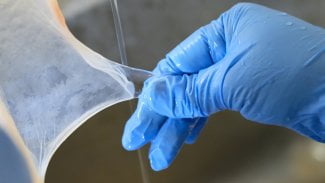graph
NAME
libgraph - abstract graph library
SYNOPSIS
#include <graphviz/graph.h> void aginit(); Agraph_t *agread(FILE*); int agwrite(Agraph_t*, FILE*); int agerrors(); Agraph_t *agopen(char *name, int kind); void agclose(Agraph_t *g); Agraph_t *agsubg(Agraph_t *g, char *name); Agraph_t *agfindsubg(Agraph_t *g, char *name); Agnode_t *agmetanode(Agraph_t *g); Agraph_t *agusergraph(Agnode_t *metanode); int agnnodes(Agraph_t *g), agnedges(Agraph_t *g); int agcontains(Agraph_t *g, void *obj); int aginsert(Agraph_t *g, void *obj); int agdelete(Agraph_t *g, void *obj); Agnode_t *agnode(Agraph_t *g, char *name); Agnode_t *agfindnode(Agraph_t *g, char *name); Agnode_t *agfstnode(Agraph_t *g); Agnode_t *agnxtnode(Agraph_t *g, Agnode_t *n); Agnode_t *aglstnode(Agraph_t *g); Agnode_t *agprvnode(Agraph_t *g, Agnode_t *n); Agedge_t *agedge(Agraph_t *g, Agnode_t *tail, Agnode_t *head); Agedge_t *agfindedge(Agraph_t *g, Agnode_t *tail, Agnode_t *head); Agedge_t *agfstedge(Agraph_t *g, Agnode_t *n); Agedge_t *agnxtedge(Agraph_t *g, Agedge_t *e, Agnode_t *n); Agedge_t *agfstin(Agraph_t *g, Agnode_t *n); Agedge_t *agnxtin(Agraph_t *g, Agedge_t *e); Agedge_t *agfstout(Agraph_t *g, Agnode_t *n); Agedge_t *agnxtout(Agraph_t *g, Agedge_t *e); char *agget(void *obj, char *name); char *agxget(void *obj, int index); void agset(void *obj, char *name, char *value); void agxset(void *obj, int index, char *value); int agindex(void *obj, char *name); Agsym_t* agraphattr(Agraph_t *g,char *name,char *value); Agsym_t* agnodeattr(Agraph_t *g,char *name,char *value); Agsym_t* agedgeattr(Agraph_t *g,char *name,char *value); Agsym_t* agfindattr(void *obj,char *name);
DESCRIPTION
libgraph maintains directed and undirected attributed graphs
in memory and reads and writes graph files. Graphs are composed of
nodes, edges, and nested subgraphs. A subgraph may contain any
nodes and edges of its parents, and may be passed to any
libgraph function taking a graph pointer, except the three
that create new attributes (where a main graph is required).
Attributes are internal or external.
Internal attributes are fields in the graph, node and edge structs
defined at compile time.
These allow efficient representation and direct access to values
such as marks, weights, and pointers for writing graph algorithms.
External attributes, on the other hand, are character strings
(namevalue pairs) dynamically allocated at runtime and accessed
through libgraph calls. External attributes are used in
graph file I/O; internal attributes are not. Conversion between
internal and external attributes must be explicitly programmed.
The subgraphs in a main graph are represented by an auxiliary directed
graph (a metagraph). Metanodes correspond to subgraphs, and metaedges
signify containment of one subgraph in another.
agmetanode and agusergraph map between
subgraphs and metanodes. The nodes and edges of the metagraph may
be traversed by the usual libgraph functions for this purpose.
USE
1. Define types Agraphinfo_t, Agnodeinfo_t,
and Agedgeinfo_t (usually in a header file) before
including <graphviz/graph.h>.
2. Call aginit() before any other libgraph functions.
(This is a macro that calls aginitlib() to define the sizes
of Agraphinfo_t, Agnodeinfo_t, and Agedgeinfo_t.)
3. Compile with -lgraph -lcdt.
Except for the u fields, libgraph
data structures must be considered readonly.
Corrupting their contents by direct updates can cause
catastrophic errors.
GRAPHS
typedef struct Agraph_t {
char kind;
char *name;
Agraph_t *root;
char **attr;
graphdata_t *univ;
Dict_t *nodes,*inedges,*outedges;
proto_t *proto;
Agraphinfo_t u;
} Agraph_t;
typedef struct graphdata_t {
Dict_t *node_dict;
attrdict_t *nodeattr, *edgeattr, *globattr;
} graphdata_t;
typedef struct proto_t {
Agnode_t *n;
Agedge_t *e;
proto_t *prev;
} proto_t;
A graph kind is one of:
AGRAPH, AGRAPHSTRICT, AGDIGRAPH, or AGDIGRAPHSTRICT.
There are related macros for testing the properties of a graph:
AG_IS_DIRECTED(g) and AG_IS_STRICT(g).
Strict graphs cannot have selfarcs or multiedges.
attr is the array of external attribute values.
univ points to values shared by all subgraphs of a main graph.
nodes, inedges, and outedges are sets maintained
by cdt(3). Normally you don't access these dictionaries
directly, though the edge dictionaries may be reordered to support
programmerdefined ordered edges (see dtreorder in cdt(3)).
proto is a stack of templates for node and edge initialization.
The attributes of these nodes and edges are set in the usual way (agget,
agset, etc.) to set defaults.
agread reads a file and returns a new graph if one
was succesfully parsed, otherwise returns NULL if
EOF or a syntax error was encountered.
Errors are reported on stderr and a count is returned from
\g5agerrors().
write_graph prints a graph on a file.
agopen and agsubg create new empty graph and subgraphs.
agfindsubg searches for a subgraph by name, returning NULL
when the search fails.
ALL OBJECTS
agcontains, aginsert, agdelete are generic functions
for nodes, edges, and graphs. gcontains is a predicate that tests
if an object belongs to the given graph. aginsert inserts an
object in a graph and agdelete undoes this operation.
A node or edge is destroyed (and its storage freed) at the time it
is deleted from the main graph. Likewise a subgraph is destroyed
when it is deleted from its last parent or when its last parent is deleted.
NODES
typedef struct Agnode_t {
char *name;
Agraph_t *graph;
char **attr;
Agnodeinfo_t u;
} Agnode_t;
agnode attempts to create a node.
If one with the requested name already exists, the old node
is returned unmodified.
Otherwise a new node is created, with attributed copied from g->proto->n.
agfstnode (agnxtnode) return the first (next) element
in the node set of a graph, respectively, or NULL.
aglstnode (agprvnode) return the last (previous) element
in the node set of a graph, respectively, or NULL.
EDGES
typedef struct Agedge_t {
Agnode_t *head,*tail;
char **attr;
Agedgeinfo_t u;
} Agedge_t;
agedge creates a new edge with the attributes of g->proto->e
including its key if not empty.
agfindedge finds the first (u,v) edge in g.
agfstedge (agnxtedge) return the first (next) element
in the edge set of a graph, respectively, or NULL.
agfstin, agnxtin, agfstout, agnxtout
refer to in or outedge sets.
The idiomatic usage in a directed graph is:
for (e = agfstout(g,n); e; e = agnextout(g,e)) your_fun(e);
An edge is uniquely identified by its endpoints and its key
attribute (if there are multiple edges).
If the key of g->proto->e is empty,
new edges are assigned an internal value.
Edges also have tailport and headport values.
These have special syntax in the graph file language but are
not otherwise interpreted.
ATTRIBUTES
typedef struct attrsym_t {
char *name,*value;
int index;
unsigned char printed;
} attrsym_t;
typedef struct attrdict_t {
char *name;
Dict_t *dict;
attrsym_t **list;
} attrdict_t;
agraphattr, agnodeattr, and agedgeattr make new attributes.
g should be a main graph, or NULL for declarations
applying to all graphs subsequently read or created.
agfindattr searches for an existing attribute.
External attributes are accessed by agget and agset
These take a pointer to any graph, node, or edge, and an attribute name.
Also, each attribute has an integer index. For efficiency this index
may be passed instead of the name, by calling agxget and agxset.
The printed flag of an attribute may be set to 0 to skip it
when writing a graph file.
The list in an attribute dictionary is maintained in order of creation
and is NULL terminated.
Here is a program fragment to print node attribute names:
attrsym_t *aptr;
for (i = 0; aptr = g->univ->nodedict->list[i]; i++) puts(aptr->name);
EXAMPLE GRAPH FILES
graph any_name { /* an undirected graph */
a -- b; /* a simple edge */
a -- x1 -- x2 -- x3; /* a chain of edges */
"x3.a!" -- a; /* quotes protect special characters */
b -- {q r s t}; /* edges that fan out */
b [color="red",size=".5,.5"]; /* set various node attributes */
node [color=blue]; /* set default attributes */
b -- c [weight=25]; /* set edge attributes */
subgraph sink_nodes {a b c}; /* make a subgraph */
}
digraph G {
size="8.5,11"; /* sets a graph attribute */
a -> b; /* makes a directed edge */
chip12.pin1 -> chip28.pin3; /* uses named node "ports" */
}
SEE ALSO
dot(1),
neato(1),
libdict(3)
S. C. North and K. P. Vo, "Dictionary and Graph Libraries'' 1993 Winter USENIX Conference Proceedings, pp. 111.
S. C. North and K. P. Vo, "Dictionary and Graph Libraries'' 1993 Winter USENIX Conference Proceedings, pp. 111.
AUTHOR
Stephen North (north@ulysses.att.com), AT&T Bell Laboratories.



















